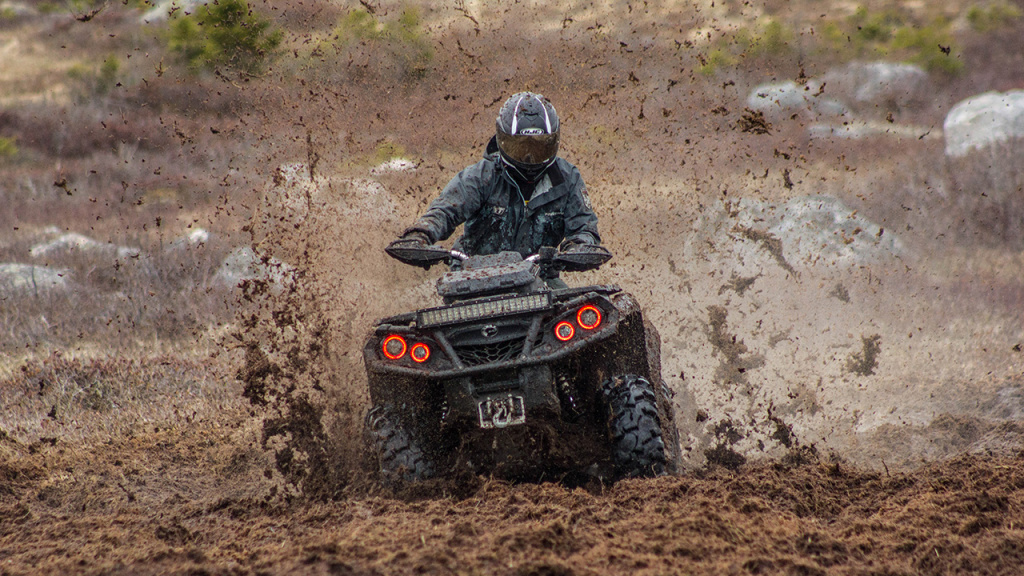How to Stiffen ATV Shocks
Shocks are used to better handle terrains that you are driving over. However, your ATVs suspension may need stiffening. Understanding how to adjust your shocks is vital for safety, handling, and road comfort.
With ATV shock adjustments you get instant feedback from being able to ride the vehicle straight away. As ATV suspension is quick and easy to adjust.
We should start with the basics, as getting to grips on what shocks do and how they work gives you good standing on how to adjust them to your needs.

How Do Shocks Work?
Your ATV shocks consist of a spring and a shock absorber fitted between the chassis and wheel assembly. They operate together to give you a smooth ride when driving over rough terrain.
Suspension movement aims to keep your ATVs wheels on the ground at all times. Tires that interact with the road surface may drive over a bump. This causes the springs to compress and making you feel nothing (or very little). The suspension setup aids in grip, speed, and cornering ability.
Shock absorbers work with the springs to have a measured way of compressing and rebounding. Made up of an oil filled tube and a piston. Valves are also used to control the speed of oil moving through the piston.
What are Clickers?
A Clicker is a small adjuster made up of a knob, nut or set screw that forms part of the shock assembly, usually mounted on the top.
The clicker allows for adjustment to the rate of flow of the oil in the shock. The name comes from the noise that you hear when rotating it, as it clicks during small changes.
Some ATVs have a high and low clicker. With high affecting the biggest bumps or landing jumps, the low affects smaller bumps when out on trails. Old ATVs may not have a clicker, instead their shocks have to be altered using the thread on the collar.
Compression and Rebound
Compression is the way your ATV shock compresses after landing or hitting a bump. Compression affects the stiffness, and more bumps and surfaces are felt your shock is stiffened.
Rebound is the rate in which your shock decompresses. Now not every ATV has a rebound adjuster but typically they are at the bottom of the shock.
How to Stiffen Your ATV Shocks
Get your Tires Ready
Inflate your tires to the correct pressure otherwise your ATV shocks cannot be adjusted correctly. Stiff ATV setups have tires pumped up to the higher side of recommended pressures.
Set Your Height / Preload
By using the threaded collar/ snail cam on your shocks, adjust the ride height. Threaded collar info can be found in your ATV owner’s manual. Use this as a reference for the height range you want to keep inside.
Raise your ATV up from the ground and undo the locking collar on top and thread the adjust collar up or down. For stiffer rides, tighten down your collar in this step.
Snail cam (if equipped) will act in the opposite way here. Meaning to stiffen up your shock, change to a higher setting.
High Speed Clicker Adjustment
If you have both high and low - Start with your high-speed adjuster. Take single adjusters as the high-speed adjuster too.
Test your ATV shocks first by landing a small jump to feel the impact. If suspension fails to bottom out the clickers need to go two clicks anti-clockwise if you want a smoother ride. Test again with a jump and loosen until your stiffness feels right. After you feel comfortable, adjust it two clicks clockwise and you have a suitable setup.
Low Speed Clicker Adjustment
For stiffening at low speed, find a trail that contains bumps or whoops first and drive quite fast. If the ride feels like its throwing you all over the place, it’s too soft. To stiffen the ATV shocks, adjust your low-speed clicker clockwise a few turns and keep testing until you have sufficient stiffness.
Rebound Adjustment
Test your rebound on a small jump, noticing how your ATV settles. If it doesn’t rebound quick enough, the rebound needs to be loosened and vice versa if it rebounds too quickly.
At the base of the shock, rebound is best started loose – having been turned counterclockwise first. Turn clockwise until your ATV settles nice and quickly.
A stiff setup can be dialed in to your shocks by following these steps. Stiff ATV setups are ideal for riders on slower, more tricky trails and adjusting your ride is essential in getting the best out of your ATV experience.







































